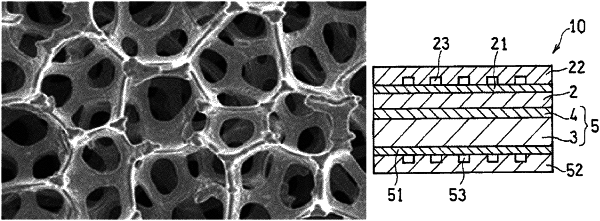| CPC H01M 8/0232 (2013.01) [H01M 8/0245 (2013.01); H01M 8/0247 (2013.01); H01M 8/0637 (2013.01); H01M 8/12 (2013.01); H01M 2008/1293 (2013.01)] | 5 Claims |

|
1. A fuel cell comprising:
a cell structure including a cathode, an anode, and a solid electrolyte layer disposed between the cathode and the anode;
an oxidizing agent flow path formed adjacent to the cathode and away from the solid electrolyte layer, the oxidizing agent flow path being a flow path for supplying a gas that contains an oxidizing agent to the cathode;
an anode-side current collector disposed adjacent to the anode and away from the solid electrolyte layer, the anode-side current collector being in contact with the anode;
an anode-side separator adjacent to the anode-side current collector and away from the solid electrolyte layer; and
a plurality of fuel flow paths formed within the anode-side separator and adjacent to the anode-side current collector, the plurality of fuel flow paths being flow paths for supplying a fuel gas that contains water vapor and a hydrocarbon to the anode, wherein
the anode-side current collector is a porous metal body having a three-dimensional network structure in which a framework is integrally continuous,
the framework includes an outer shell and a core portion, the core portion being hollow, including a conductive material, or being hollow and including a conductive material,
at least an outer layer in the outer shell includes an alloy layer containing a first metal and a second metal with the first metal being Ni and the second metal being Sn,
a first phase and a second phase that have different respective Sn concentrations with respect to Ni coexist in the alloy layer, and
the first phase comprises an intermetallic compound phase that contains Ni3Sn as a major component and the second phase contains Ni as a major component with Sn being dissolved in Ni.
|